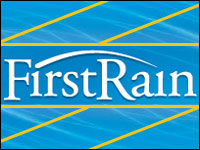
“Who is the customer?” It’s a great question, one that my managers liked to ask when I was a young sales representative. Like all great questions, it got to the meat of the matter with an economy of words that were as impressive as much for their brevity as for their meaning.
The customer’s identity is often far from obvious, and it’s why professional sales and marketing people obsess over it. The customer is frequently not the user, technician or curious tire-kicker, though these types can influence the decision. The customer is, and can only be, the person who pays the bill — not the person in finance who cuts checks all day long, but the person with the budget (and P&L responsibility) who says in effect: I will bet my job on this purchase.
To be sure, that is a business-to-business scenario, but the same thing plays out on the consumer side. The customer is not the screaming kid in the shopping cart demanding some sugar-laden treat. It is the parent pushing the card and saying in a calm but firm tone, “Not today.”
Finding the customer is especially tough when there is more than one customer type in a business, and it’s not simply a matter of identifying the buying influences in a strategic selling situation. A great example is the newspaper industry — or more broadly, publishing.
Print publications serve two masters: The reader and the advertiser. Publishers sell papers and magazines to readers who may not pay the full cost of production and distribution, and they sell ads to vendors. The profits come (or used to come) from advertisers. It’s no secret that advertisers have become a vanishing species in the last few years, as many of them have at least dipped a toe into the profitable waters of the Internet.
Here’s the interesting part: As advertisers have played a depressingly decreasing role in publishers’ revenue streams, the readers have gained in standing. Publishers, however, have been too slow at understanding that the shifting importance of each major group has necessitated a change in business models.
When a publisher’s primary revenue stream was advertising, the business was very much a 19th century manufacturing model. A buyer stepped up with an order for so many widgets (i.e. ads) and the publisher quoted a price and manufactured the advertisement, along with the rest of the content.
Just as the reader has now become an increasingly important part of the revenue equation, the reader has also come into a plethora of options beyond the printed page for receiving what’s now called digital content. Publishers have been slow to change, and many continue to pursue the old style manufacturing approach. Readers, however, don’t buy big ticket ads; they buy subscriptions for comparative pennies, and the old school business model and all of its infrastructure — including software — are a poor fit for the new reality.
A few years ago, publishers finally decided to stop giving away their content on websites and started charging for it through a mechanism called a paywall. Instead of solving the problem of selling subscriptions to readers, paywalls were met with a yawn.
The paywall was essentially a digital front end for the old business and change without pain for the publishers. Rather than ushering in a new era of publishing, in which the focus was on delivering content in new ways and phasing out the old, the business model of printing content and putting it into trucks every day — of buying paper by the truck load and ink by the barrel — remained.
In my world, I would say that rather than starting a new paradigm, publishers used digital technology to extend the old one. The result has been a continued loss of customers and revenues.
It doesn’t have to be that way. Subscription economy companies are making a big push into publishing with the purpose of stoking a fire under the new paradigm. But what does the new paradigm look like? Simply put, it’s customer-centric and the customer in this case is the reader. Advertisers retain their place as customers too, but for a different part of the business. Even there the business has changed.
The Internet has made it possible for readers and advertisers to get what they need from many sources that are not traditional publishers. For either side of the publishing business to succeed, each has to ask anew the question we started with: Who is the customer?
Answering that question can be as illuminating for publishers today as it was for me many years ago.
If you are a reader, you need easy access to content and the ability to use it in conjunction with various other content sources. If you are an advertiser, you want more than the ability to broadcast an ad the same way you did decades ago. Advertisers today want to be able to narrowcast to the exact people they want to target. All of this doesn’t happen by accident, but luckily it can all happen thanks to a few new ideas like social media and social practices.
That means capturing customer data and analyzing it so that a publisher can offer a vendor a refined understanding of the marketplace. Of course, there’s no better venue to place an ad than near your ideal traffic flow. Such an approach might not immediately reverse the fortunes of newspapers and magazines, but it will stop the hemorrhaging.
Finally, too often when we think about social and CRM, we may forget that social has long tentacles throughout the economy. But social is the phenomenon it is precisely because it is so pervasive. There isn’t a business or an industry that can’t benefit from social approaches.
I think that’s the true lesson from the plight of publishers.























































